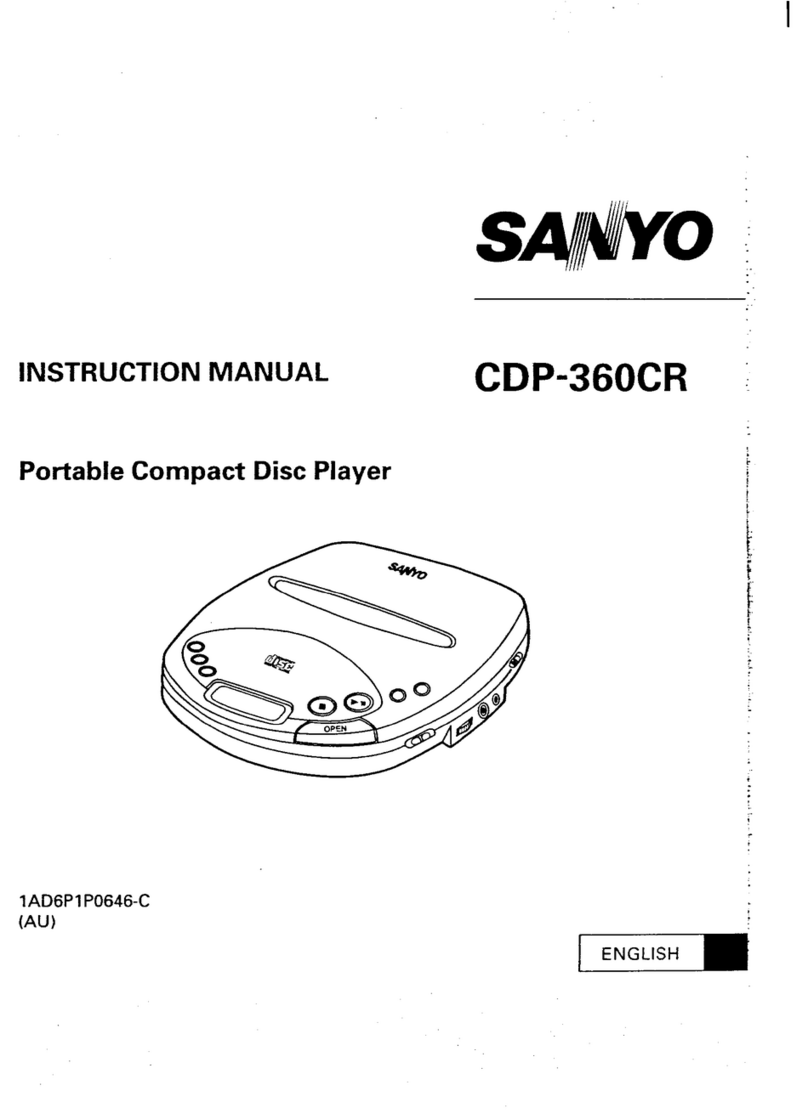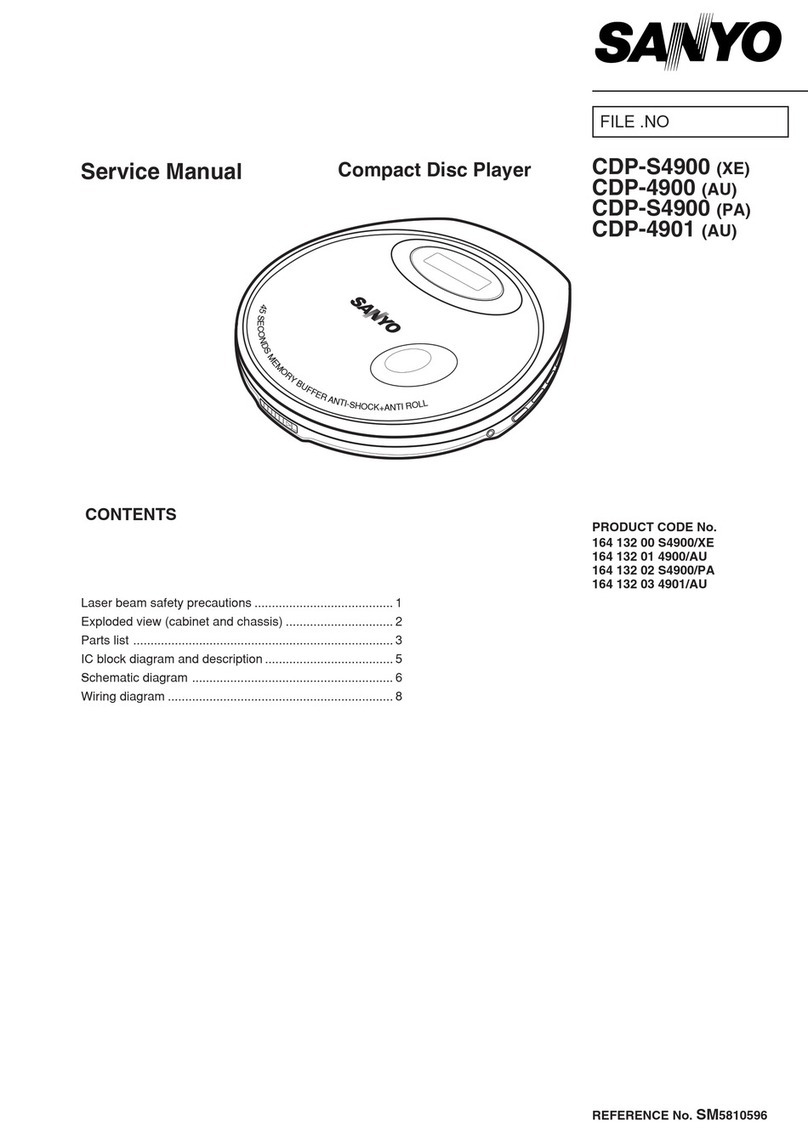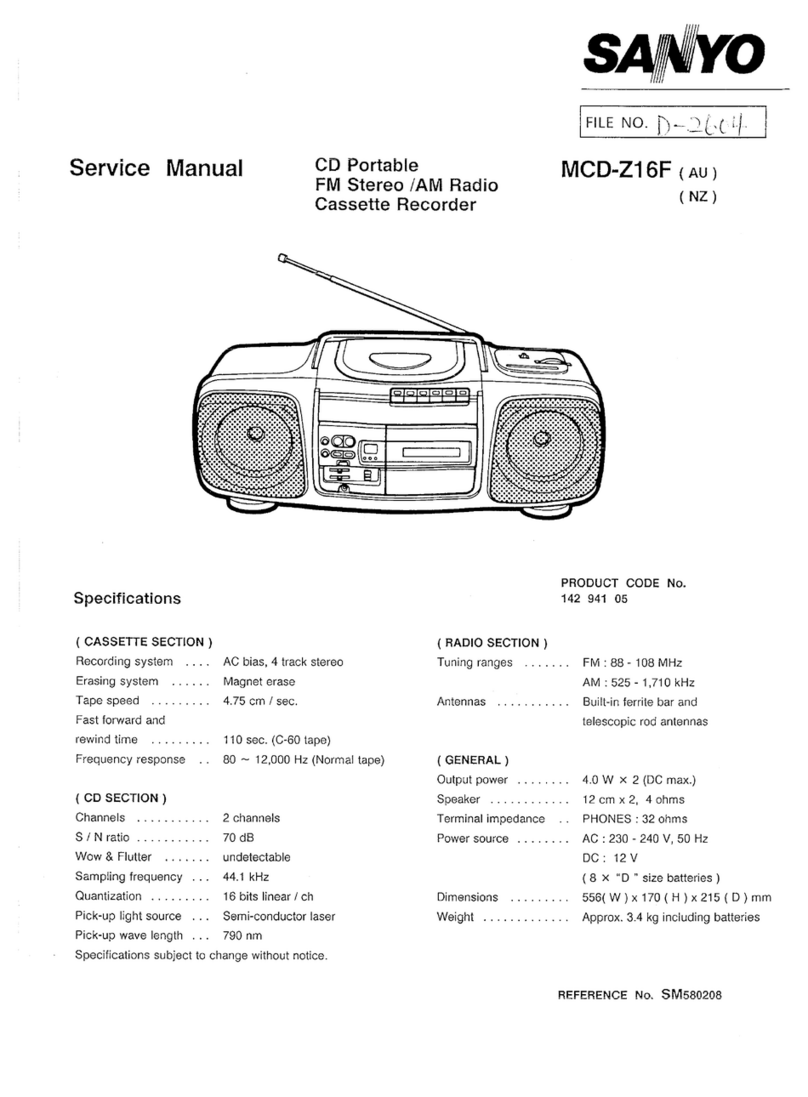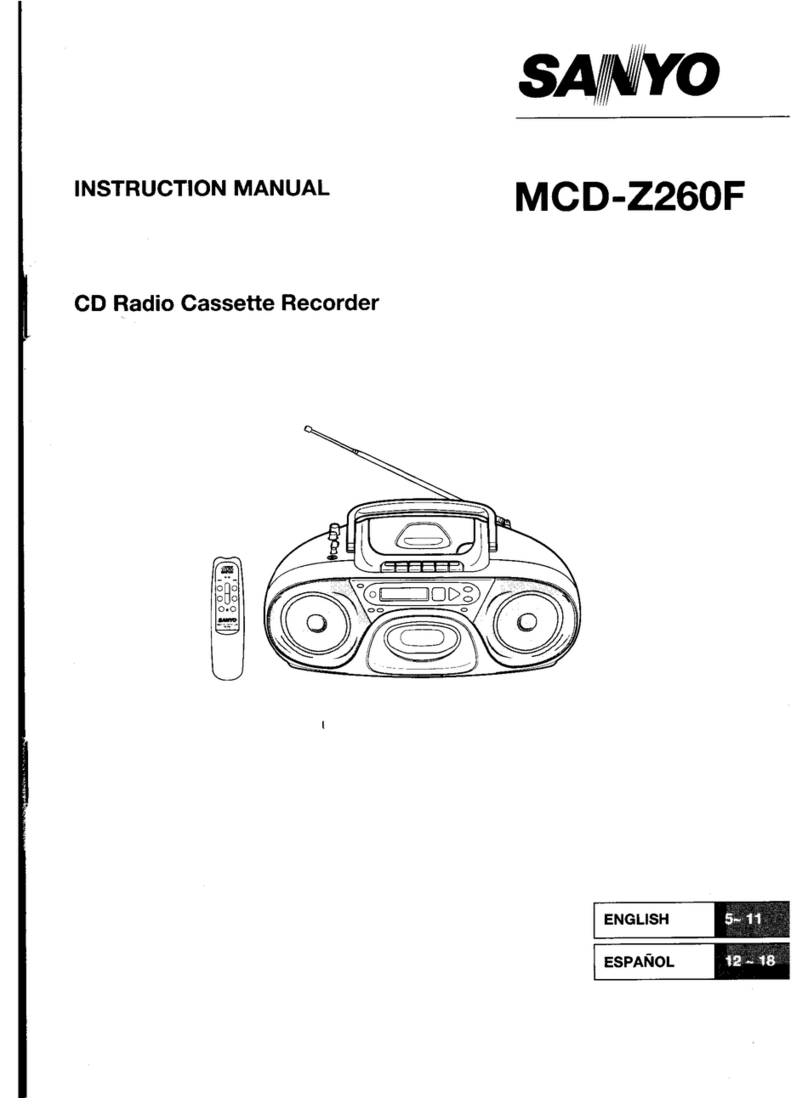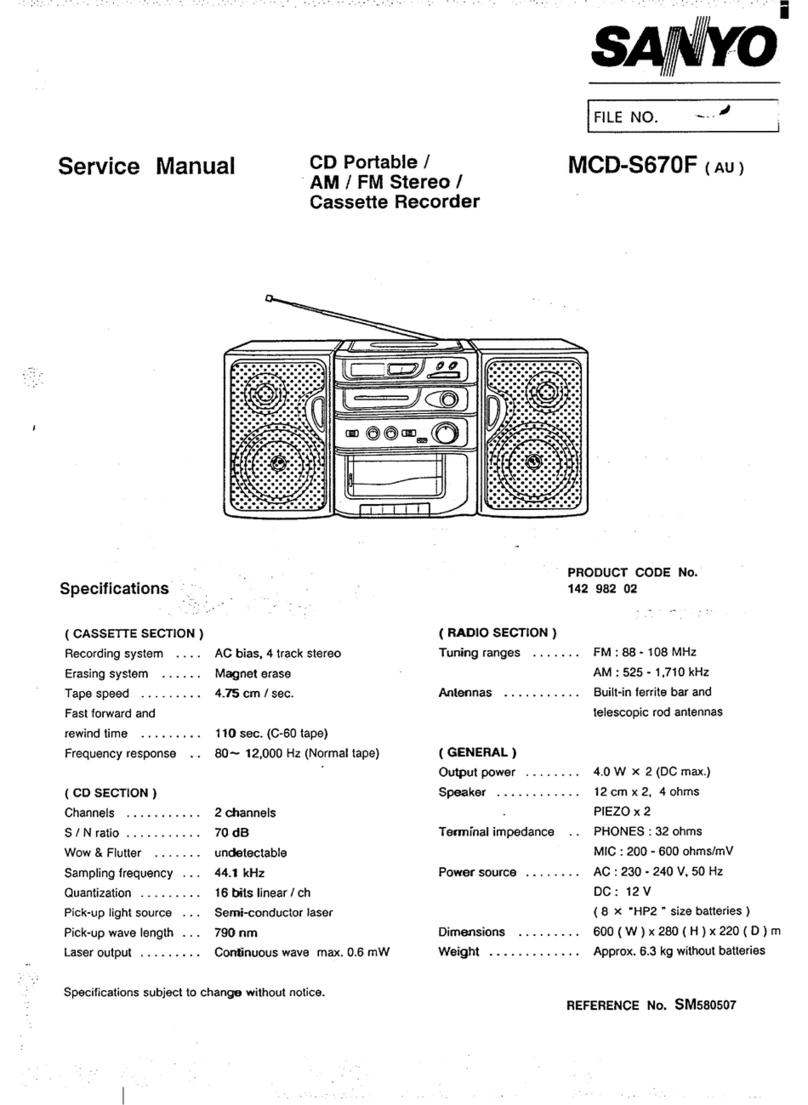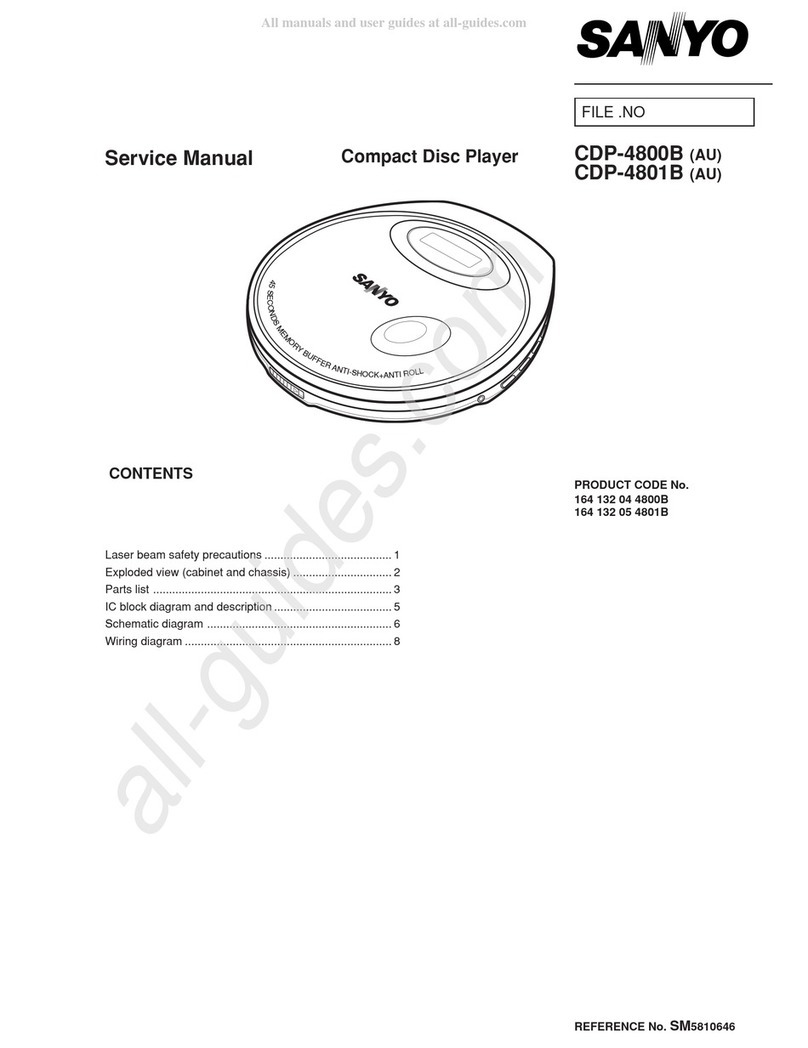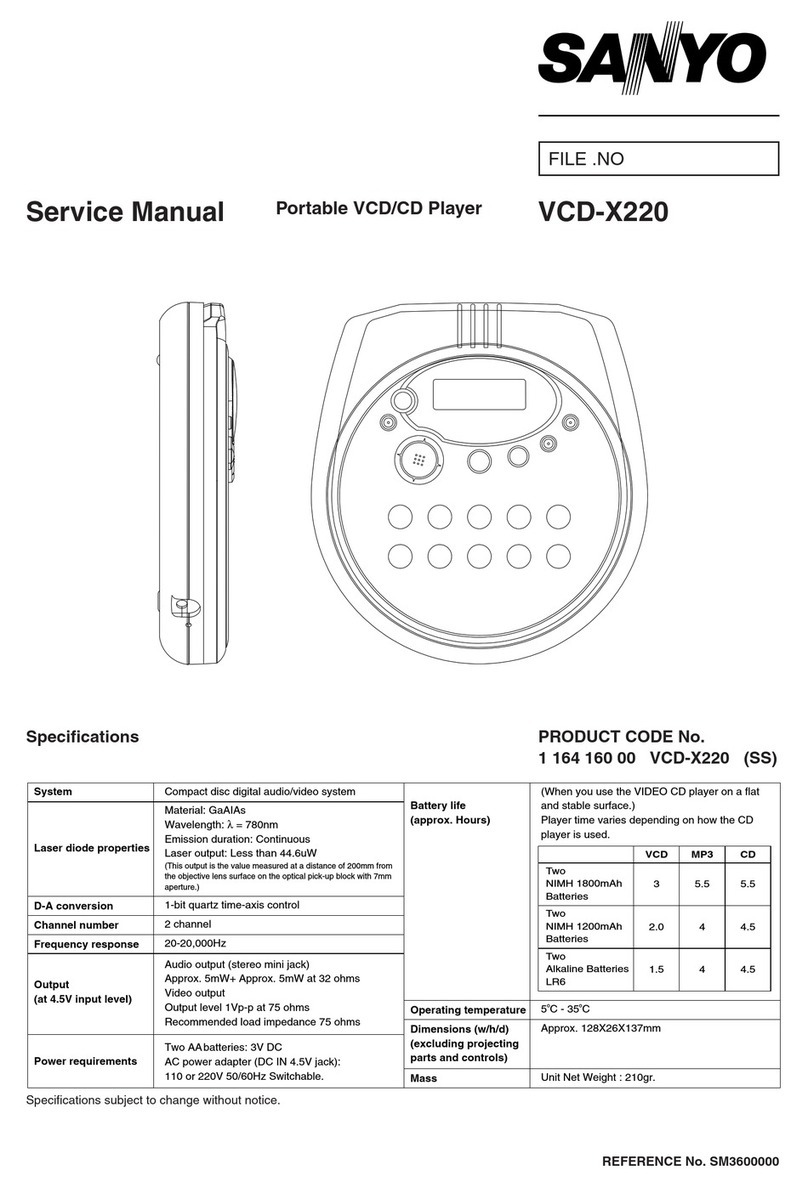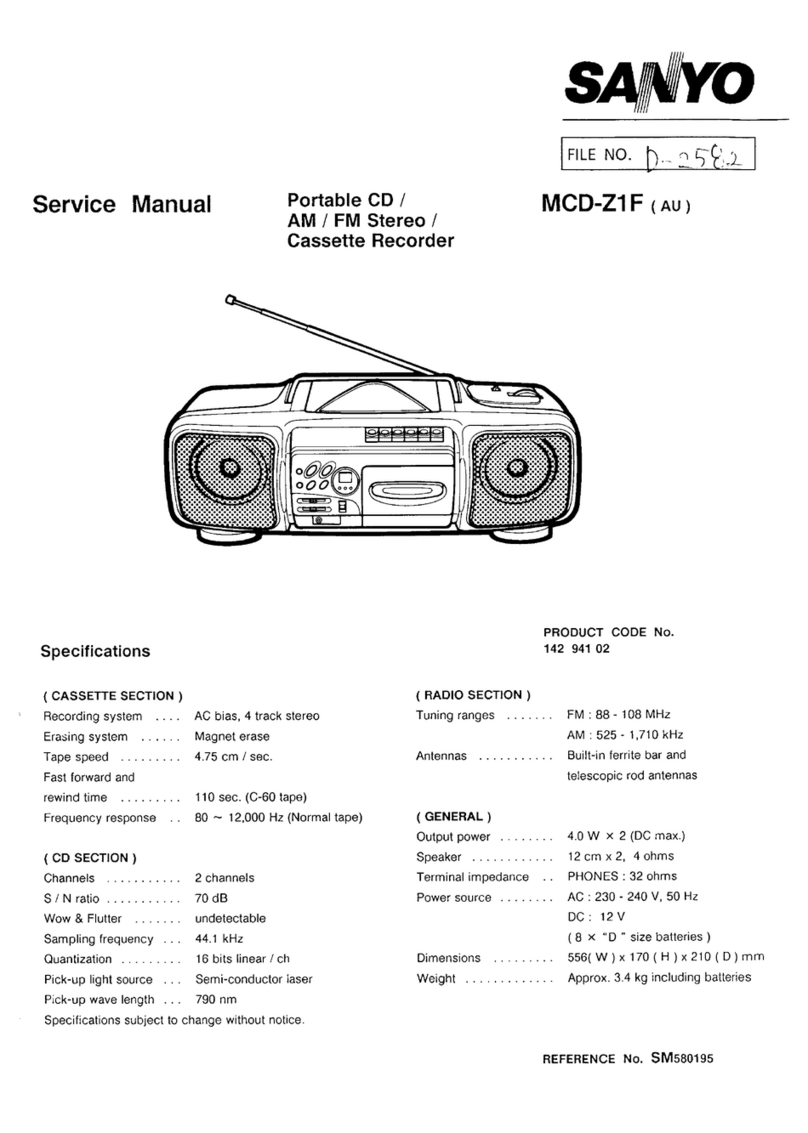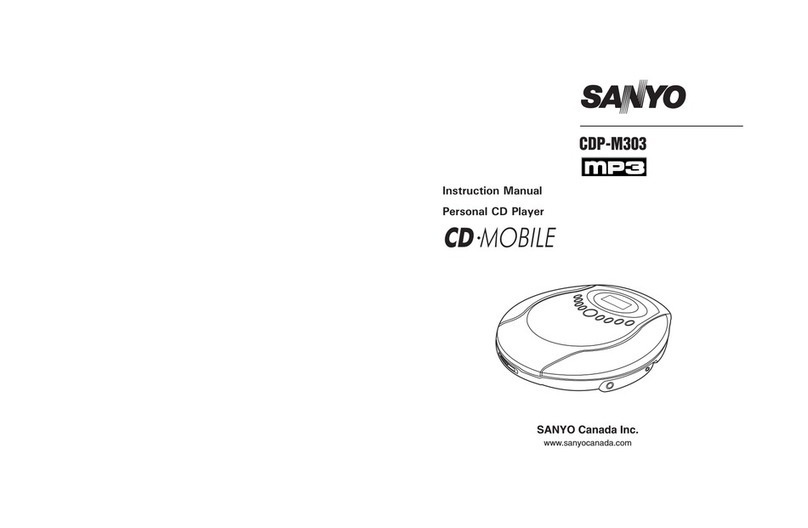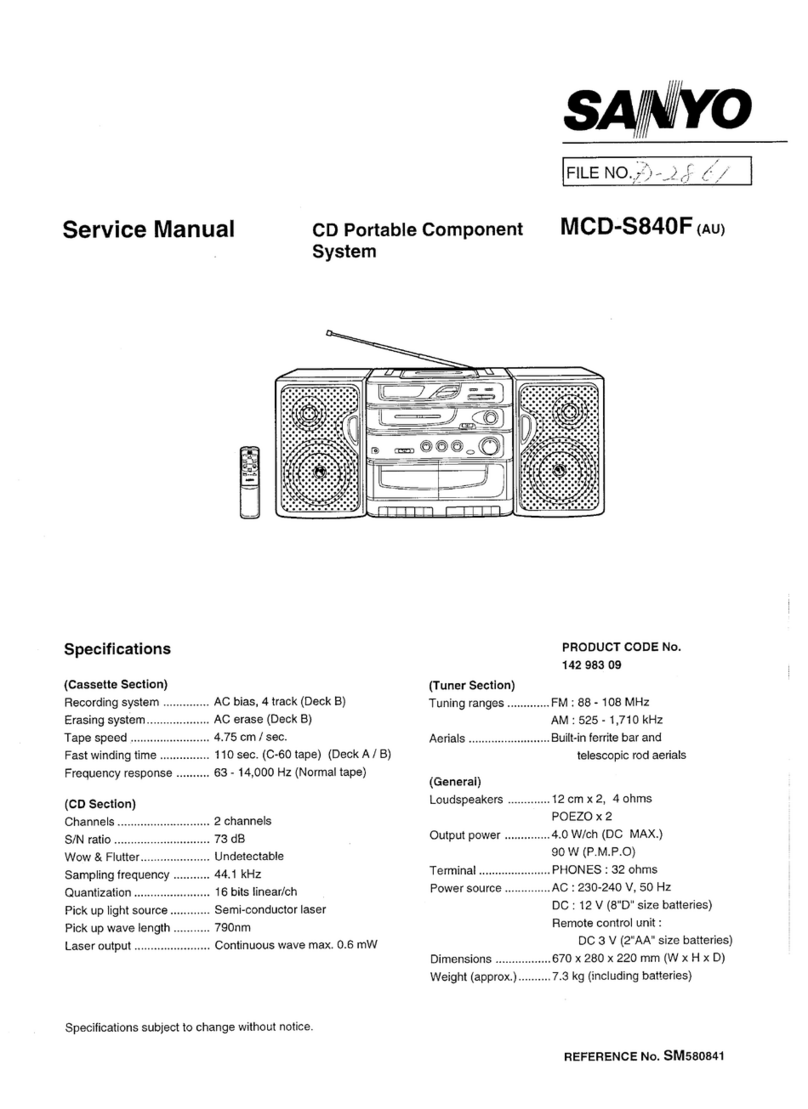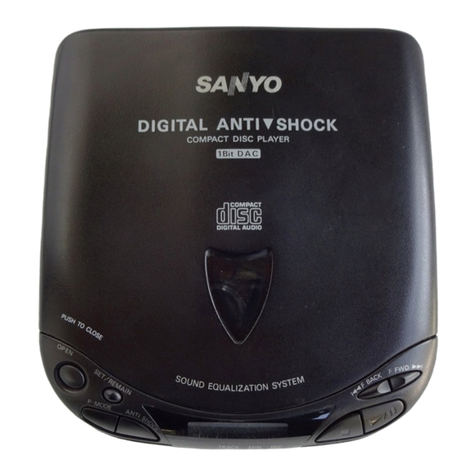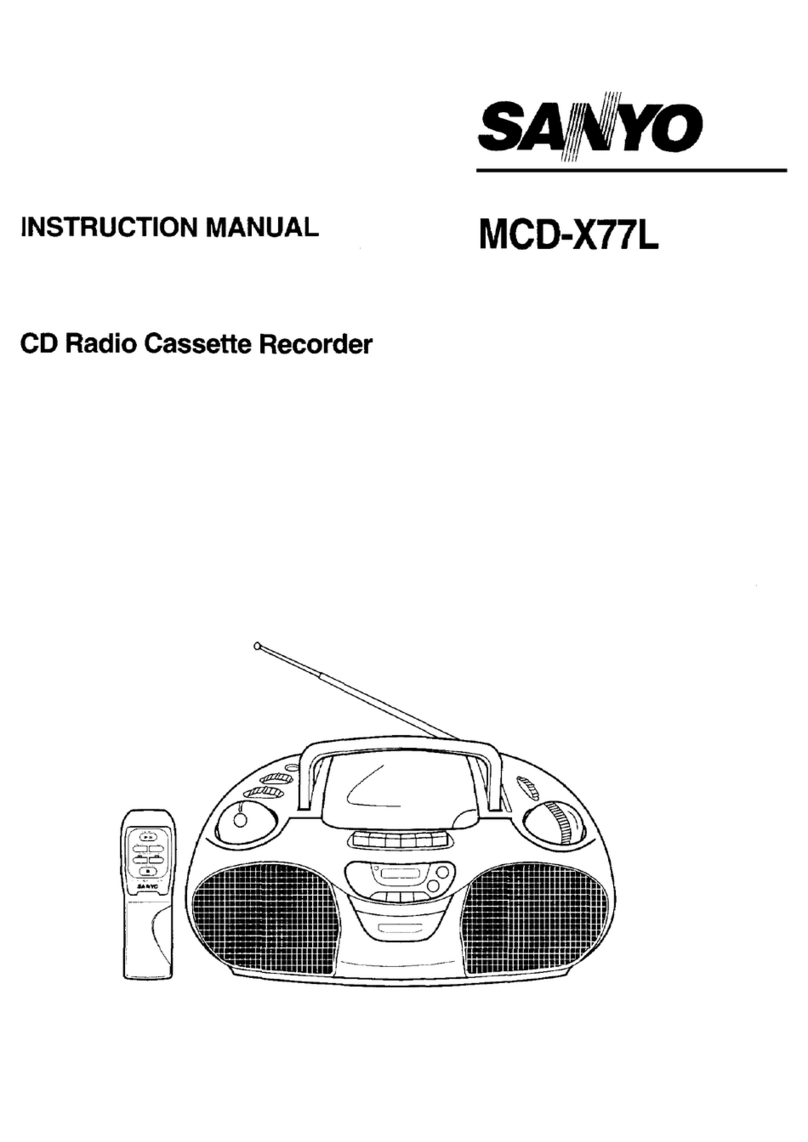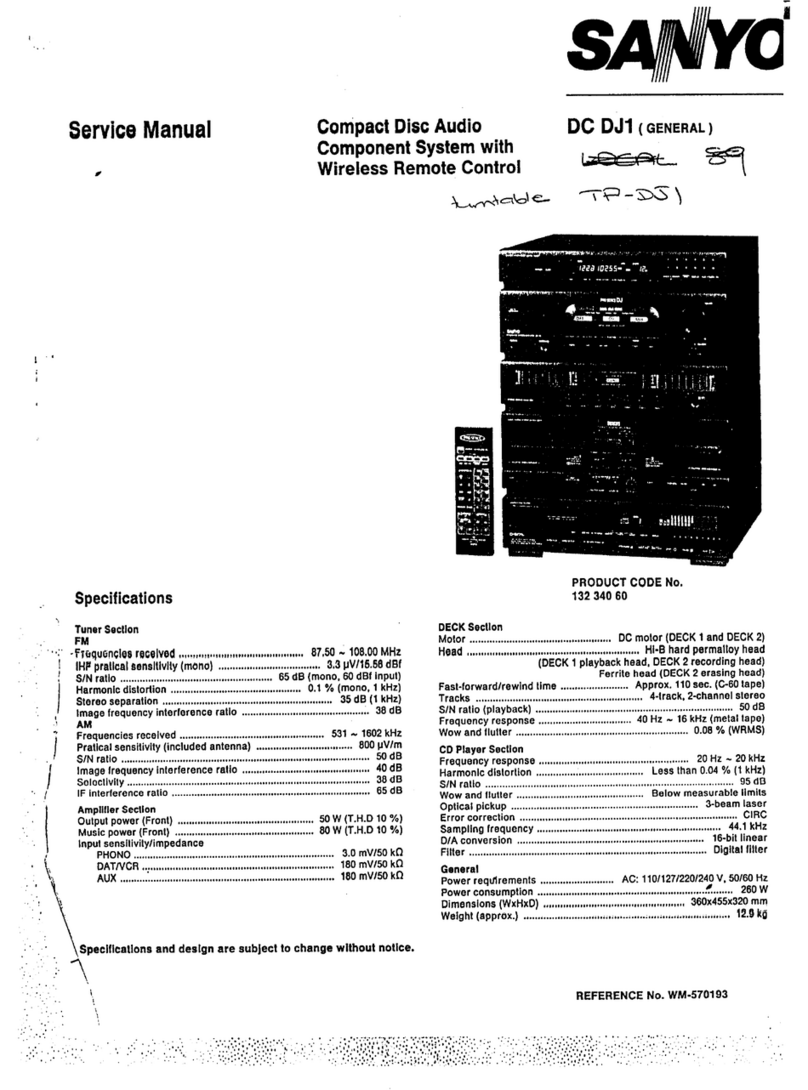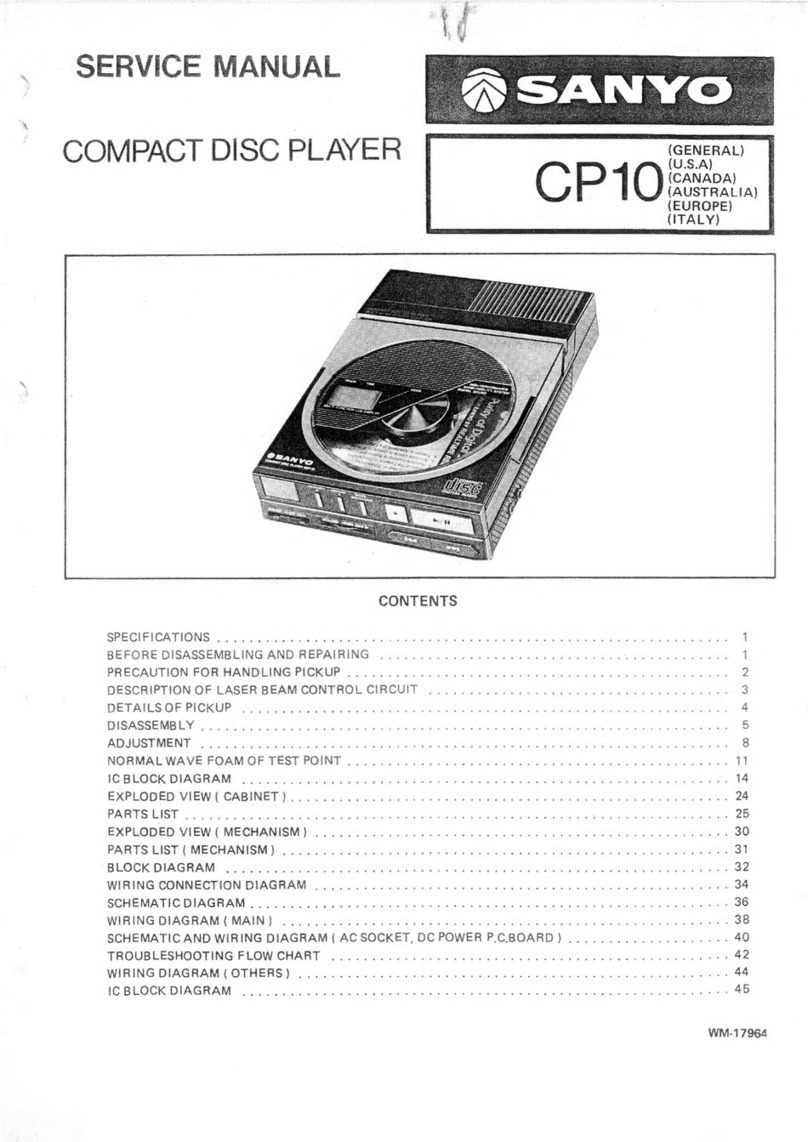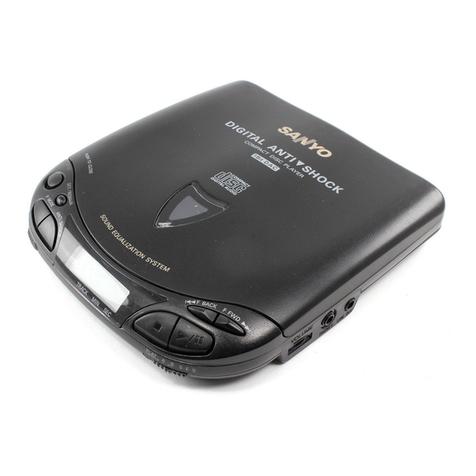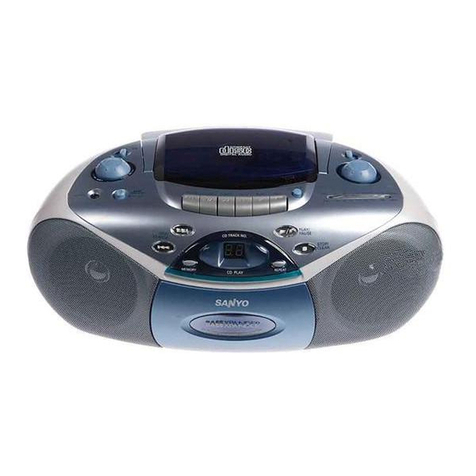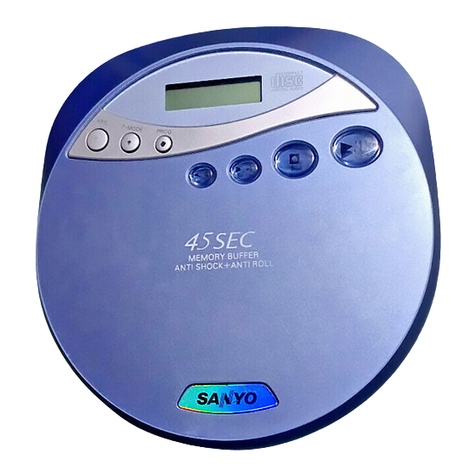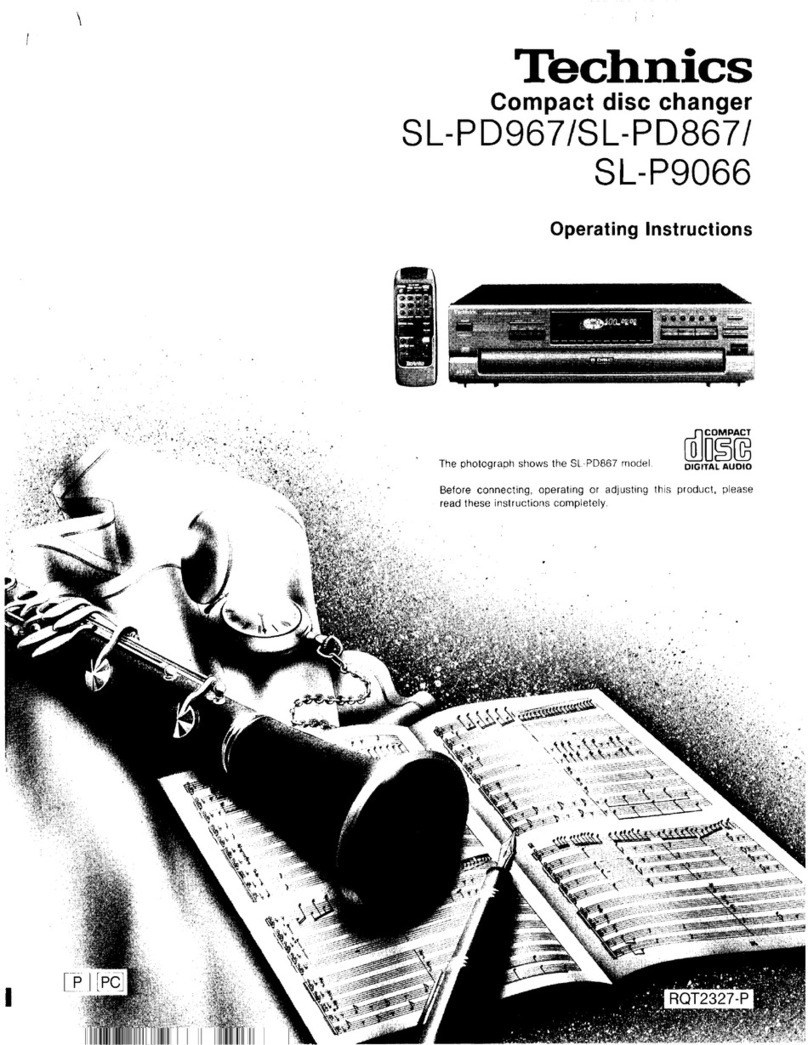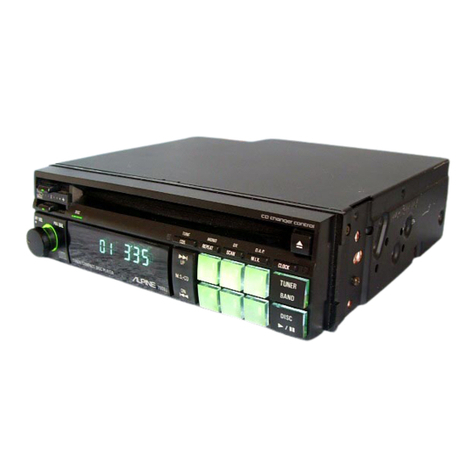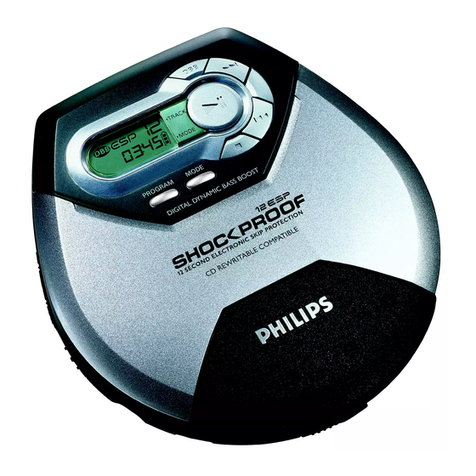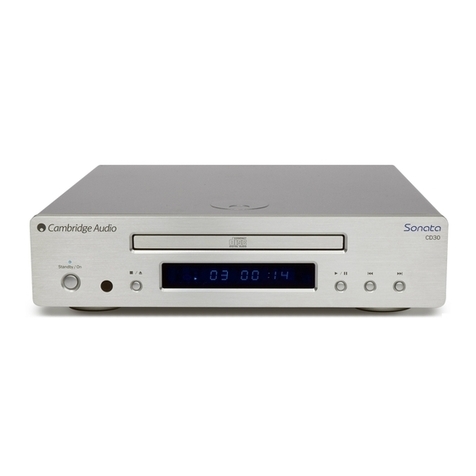[ENGLISH]
Your SANYO product is designed and
manufactured with high quality materials and
components which can be recycled and reused.
This symbol means that electrical and electronic
equipment, at their end-of-life, should be disposed
of separately from your household waste.
Please dispose of this equipment at your local
community waste collection/recycling centre.
In the European Union there are separate
collection systems for used electrical and
electronic products.
Please help us to conserve the environment we
live in!
[DEUTSCH]
Ihr SANYO Produkt wurde entworfen und
hergestellt mit qualitativ hochwertigen
Materialien und Komponenten, die recycelt und
wiederverwendet werden können.
Dieses Symbol bedeutet, daß elektrische
und elektronische Geräte am Ende ihrer
Nutzungsdauer von Hausmüll getrennt entsorgt
werden sollen.
Bitte entsorgen Sie dieses Gerät bei Ihrer örtlichen
kommunalen Sammelstelle oder im Recycling
Centre.
In der Europäischen Union gibt es
unterschiedliche Sammelsysteme für Elektrik- und
Elektronikgeräte.
Helfen Sie uns bitte, die Umwelt zu erhalten, in
der wir leben!
[FRANÇAIS]
Votre produit Sanyo est conçu et fabriqué avec
des matèriels et des composants de qualité
supérieure qui peuvent être recyclés et réutilisés.
Ce symbole signifie que les équipements
électriques et électroniques en fin de vie doivent
être éliminés séparément des ordures ménagères.
Nous vous prions donc de confier cet équipement
à votre centre local de collecte/recyclage.
Dans lʼUnion Européenne, il existe des systèmes
sélectifs de collecte pour les produits électriques
et électroniques usagés.
Aidez-nous à conserver lʼenvironnement dans
lequel nous vivons !
Les machines ou appareils électriques et
électroniques contiennent fréquemment des
matières qui, si elles sont traitées ou éliminées
de manière inappropriée, peuvent sʼavérer
potentiellement dangereuses pour la santé
humaine et pour lʼenvironnement.
Cependant, ces matières sont nécessaires au
bon fonctionnement de votre appareil ou de votre
machine. Pour cette raison, il vous est demandé
de ne pas vous débarrasser de votre appareil ou
machine usagé avec vos ordures ménagères.
[NEDERLANDS]
Sanyo producten zijn ontwikkeld en gefabriceerd
uit eerste kwaliteit materialen, de onderdelen
kunnen worden gerecycled en weer worden
gebruikt.
Het symbool betekent dat de elektrische en
elektronische onderdelen wanneer deze vernietigd
gaan worden, dit separaat gebeurt van het
normale huisafval.
Zorg ervoor dat het verwijderen van de apparatuur
bij de lokaal erkende instanties gaat gebeuren.
In de Europese Unie wordt de gebruikte
elektrische en elektronische apparatuur bij de
daarvoor wettelijke instanties aangeboden.
Alstublieft help allen mee om het milieu te
beschermen.

